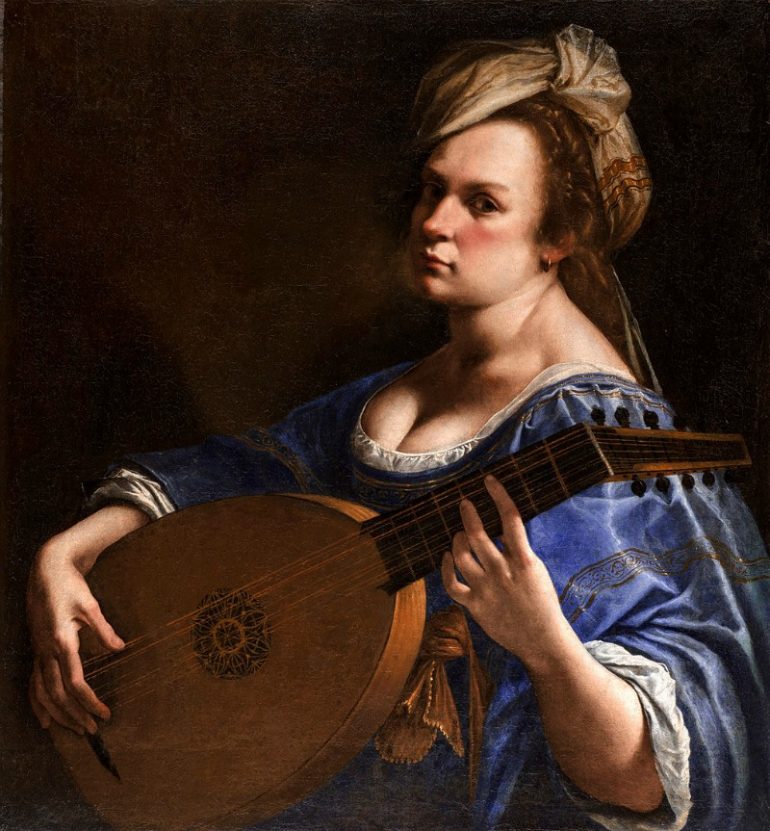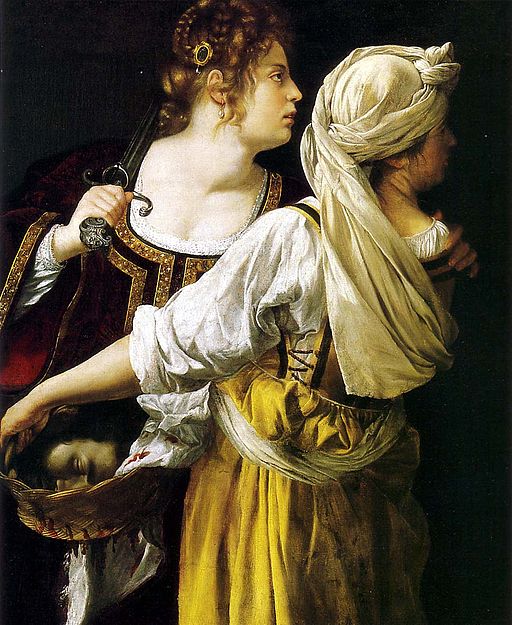Considered as one of the most highly skilled painters among the artists that came after Caravaggio, Artemisia Gentileschi was one of the very few women painters accepted by art patrons or artistic community during her time. She became the first female member of Florence’s Accademia di Arte del Disegno. Italian Baroque painter Artemisia Gentileschi was born on July 8, 1593.
Most of her paintings showed strong women who were suffering, culled from the Bible and local myths, including warriors, suicides and victims.
Early life and work
Born in Rome, Artemisia learned art at a very young age as her father was a painter from Tuscany. Together with her brothers, she learned painting, drawing and mixing colors in their father’s workshop, although she showed more promise than her brothers. Since her father was greatly influenced by Caravaggio, Artemisia’s works also showed the great artist’s painting style although her approach is more naturalistic. Here very first painting was created when she was 17 years old. It was titled “Susanna e i Vecchioni” (Susanna and the Elders), which she painted in 1610.
She suffered sexual accosting by two men who were supposed to be her art teachers in 1611. The rape became known when they pressed charges against Agostino Tassi. Her participation in the prosecution overshadowed her artistic ability and for many years she was viewed as a curiosity. In the succeeding paintings based on the “Susanna” theme, Artemisia depicted her traumatic sexual experience.
Shortly after the trial, her father arranged for her to get married to a modest artist and the couple moved to Florence.
In Florence
Casa Buonarroti commissioned Artemisia to produce a painting soon after their move to Florence. She later enjoyed the patronage of Charles 1 and the Medici family, and became a court painter of great success. It was supposed that it was during this time that she painted “The Virgin and Child” or the Madonna col Bambino that is on display in Rome’s Spada Gallery.
Artemisia Gentileschi received notable acclaim in Florence. The Accademia delle Arti del Disegno (Academy of the Arts of Drawing) accepted her, the first female in the esteemed, male-dominated academy. She enjoyed the friendship of many respected artists and art patrons, including Cristofano Allori, Granduchess Cristina, Granduke Cosimo II de’ Medici, Galileo Galilei. She was highly regarded by Michelangelo Buonarroti the younger, who was the nephew of the world-renown artist, Michelangelo. She was asked to decorate the ceilings of the Casa Buonarroti and she created an allegory called “Allegory of the Inclination (natural talent),” represented by a compass-holding nude young woman. It may be because of her traumatic experience that most of her heroines resemble her.
Some people believed that her tragic experience freed here from pressures from society, which is why her figures usually depicted violent and defiant women. Some of the important works during her time in Florence include “Giuditta che decapita Oloferne” (Judith beheading Holofernes), “Giuditta con la sua ancella” (Judith and her Maidservant), “Self-Portrait as a Lute Player” and “La Conversione della Maddalena” (The Conversion of the Magdalene).
Back to Rome
Artemisia went back to Rome without her husband who squandered most of her money. There were people who believed that she joined her father in Genoa since their works during this period were very similar. However there were also those who posit that she stayed in Rome together with her daughter, who later became a painter as well.
While in Rome, Artemisia linked up with the Academy of the Desiosi. She also became good friends with art lover and collector as well as humanist Cassiano dal Pozzo. However, even if she was a renowned artist, she did not gain much success in Rome. There were enough evidence to trace her move to Venice around 1627.
Although some of her paintings were difficult to date, most of Artemisia’s work displayed mastery of styles and influences from other great artists. She showed strong evidence of chiaroscuro mastery in Giuditta con la sua ancella, (Judith and her Maidservant). Her strength as a portrait artist can be seen in Ritratto di gonfaloniere (Portrait of Gonfaloniere). The lessons she learned on Venetian luminism showed up in her paintings like Ester ed Assuero (Esther and Ahasuerus) and Venere Dormiente (The Sleeping Venus).
Naples and England
In the latter years of her career, Artemisia found a new home in Naples, the place she moved to in 1630. Her daughter got married in Naples. She received many commissions once again and built friendships with several influential people, including dukes, writers and artists. She did several paintings in Naples, including paintings for the cathedral.
She later joined her father In 1638 and they became court painters to the court of Charles I of England. She stayed in London until 1642 to finish her commissions and returned to Naples, where she remained active until 1654.
Photo Attribution:
Featured and 1st image by Artemisia Gentileschi [Public domain], via Wikimedia Commons
2nd image by Artemisia Gentileschi [Public domain], via Wikimedia Commons

